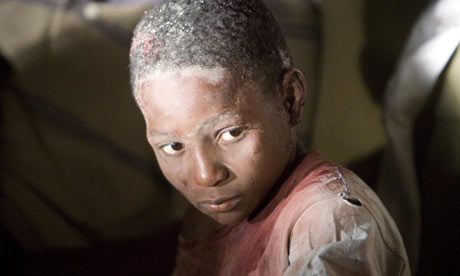For many of us (myself definitely included), it is difficult to imagine the destruction caused by last week's earthquake in Haiti. This article by MSNBC's Joel Schoen helps somewhat:
...let’s try to imagine what the equivalent devastation might look like in the U.S.
Here’s (roughly) what our country might be dealing in the first week of an equivalent scale of destruction:
The White House and the Capitol have been destroyed. Congress and critical government agencies overseeing finance, health and other domestic services have been critically impaired. Many of the government employees who used to work in those offices are dead.
There is no Pentagon (because there is no Haitian military).
With the risk of aftershocks and doubts about the safety of government buildings still standing, President Barack Obama holds his cabinet meeting outside in a circle of white plastic chairs.
...
The U.S. Interstate highway system has been destroyed (there never was one in Haiti), and travel by road is arduous.
The entire air traffic control system has been destroyed. Days after the disaster, it has been replaced by a small makeshift system that includes handheld radios. There is one functioning runway in the entire country at a facility about the size of a small regional U.S. airport.
...
The infrastructure to handle marine cargo has been destroyed at the major seaports — New York, Los Angeles, Houston. The only port left operable to serve the entire country is in Charleston, S.C., and it’s not set up to handle large volumes of cargo.
Police and foreign troops are trying to maintain order on the streets, but looting and fires have broken out. The FBI building (in Haiti's case, the headquarters of the UN peacekeeping mission) has been destroyed, and hundreds of people, including the man in charge, have been killed.
As much as one third of the population (in the U.S., roughly 100 million people) are without food, water or shelter and limited means of acquiring it.
The death toll can only be guessed. In a country of 9 million, the loss of 100,000 souls in a single disaster is a little more than 1 percent of the Haitian population, or the equivalent of 3.3 million Americans.
Millions of survivors are in need of urgent medical attention; many simply won’t receive it — even if relief efforts proceed flawlessly. Most local hospitals have been destroyed. The ones that remain have no supplies. Doctors have resorted to using hacksaws and vodka in place of surgical instruments and alcohol.
...
With all of the money, people and supplies flooding in, you might expect the chaos to subside in a matter of weeks or months as things begin getting “back to normal.” That’s not going to happen in Haiti. For one thing, “normal” before the quake was a country just beginning to try to emerge from decades of dysfunctional government and abject poverty.
Before the quake, Haiti was already the poorest country in the western hemisphere and the third hungriest country on earth, after Afghanistan and Somalia. Haiti had a life expectancy of 60 and a poverty rate of 80%. The quake killed as many as 200,000 people and left millions homeless. As Schoen writes, "The greatest risk to Haiti’s long-term survival (if not revival) is that the world’s 24-hour news cycle turns its attention to the next disaster, and the opportunity is lost to rebuild Haiti as a viable state."
Let's not let that happen.
To give to earthquake relief, go these websites:
Christian Reformed World Relief Committee
International Red Cross
World Vision
Also, for Dordt students, a special service for Haiti will be held during community block (11:00) on Monday in the BJ Haan. Come join your fellow students in prayer for the people of Haiti. A freewill offering will be taken towards relief efforts in the town of Dordt student Claude Gillot.


No comments:
Post a Comment